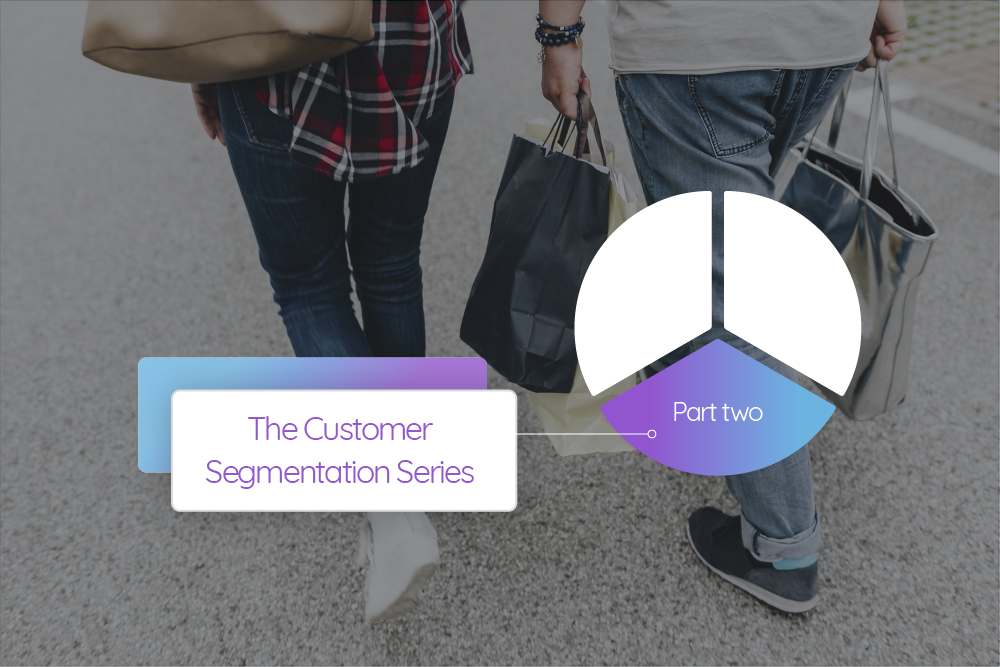
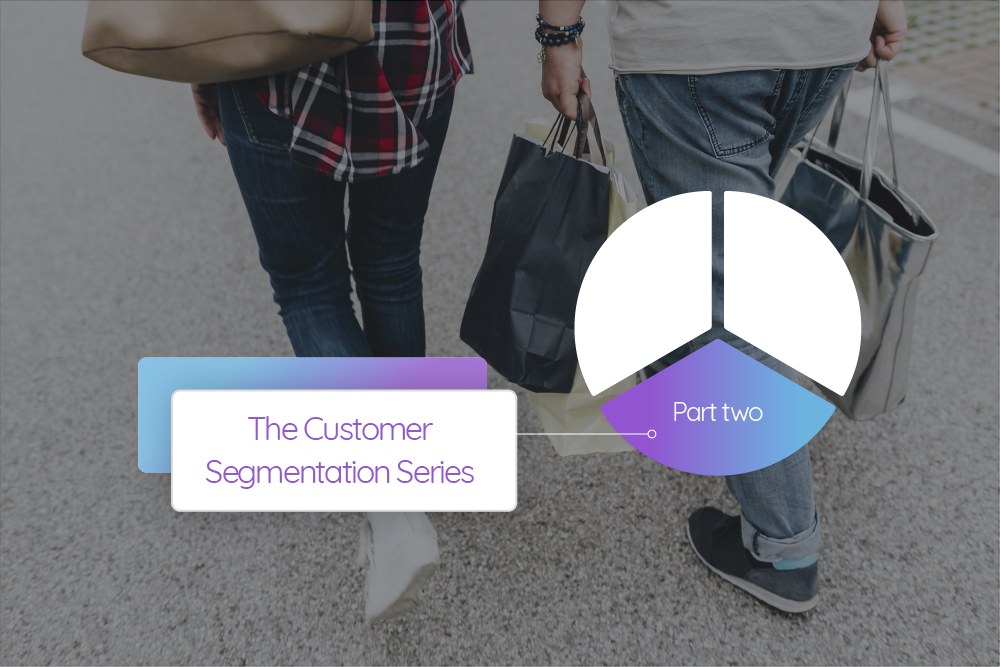
So, you've read Part One of our Customer Segmentation Series and now you want to learn more about how that translates to your marketing strategies. You’ve come to the right place; introducing, Part Two of our Customer Segmentation Series. In this blog, we will be tackling the finer details of targeted marketing by drilling down on the customers who respond to retention marketing. Naturally, the next question is where do you start? And how do you understand which customers you should be targeting?
Knowing which customers to market to
There are a couple of factors to keep in mind when it comes to retention marketing:
-
First, it can be “anywhere from five to 25 times more expensive” to acquire a new customer than it is to keep an established one, depending on what industry you’re in. Furthermore, as Forbes put it, “acquiring new customers is important, but retaining them accelerates profitable growth.” Forbes also adds the old adage, “Make new friends but keep the old. One is silver, the other gold.” What we’re getting at here is that when it comes to making smart investments with regards to your marketing, it’s incredibly beneficial to focus on established customers.
-
The second factor is something called the 80:20 rule. The basic rundown is that 80% of your revenue is attributable to 20% of your customers. This means that your best and most loyal customers are the ones keeping your business afloat, and you should be paying close attention to them.
Don’t take this to mean that you shouldn’t be focused on acquisition marketing, we’re simply saying that to make the most out of your marketing tactics, you need to understand where your budget is going and how you’re planning to spend that budget effectively. Stay tuned for Part Three of this blog series to learn about acquisition marketing with customer segmentation.
We’ve established there is a certain selection of your customers who will cost you the least to market to, who are the most loyal, and who often have the most useful feedback for you – tapping into this is key to nailing customer loyalty. Pay attention to your ‘Best’, ‘Loyal’, and ‘Promising’ segments and use tactics to engage these customers in ways that give them what they want. Think tiered loyalty programs, friend referrals, spending rewards like free shipping, or ‘freebies’ at a certain spend. Tactics that tell your customers that you appreciate them, know what they want, and assure them that they don’t have to look anywhere else will help you to keep your customers coming back to your store over and over again.
Understanding your segments

As your customer database grows, that the metrics defining your segments will change too. It’s important to understand how your segments grow and change in order to get the most out of your marketing. Segmentation is an amazing tool for creating targeted marketing, but it’s vital for you to understand how the segment rules will adjust to your customer’s shopping behaviors and ultimately your segments. For example, as your ‘Best’ customers order more frequently and spend more per order, the minimum spend to enter the ‘Best’ segment could increase, potentially causing some of your other ‘Best’ customers to fall into the ‘Loyal’ segment. A good metric to look at in this example is the segment’s Average Customer Lifetime Value (ACLV).
Looking into a segment’s ACLV is helpful when you’re getting into the nitty-gritty of your budgeting, your target audiences, and your customer segments. If you know how much your customers are worth to you now, and you can estimate how much they will be worth to you in the future (over the next 3 years), you can allocate your marketing budget to get the biggest return on investment. Check out our blog on calculating Customer Lifetime Value to help you understand the basics of CLV and how Marsello calculates this for you. Our friends at Shopify also clearly explain the importance of CLV. As they put it,
“Not all customers are created equal. In fact, the top 1% of eCommerce customers are worth up to 18 times more than average customers. […] As a business owner, you need to be able to focus your efforts on acquiring the right customers—the customers who will take your business from being a flash-in-the-pan success to a household name.”
Understanding your ACLV and where you should allocate your marketing budget all come back to Return on Investment (ROI) – you want your marketing spend to even out through your revenue gain, otherwise, that marketing can quickly become an expensive loss. When you understand your segments, how they change, and who is in them, you can predict which ones have the opportunity to become more valuable and who will already give you a high ROI. Let’s look at another example of how your segment metrics can change with a different customer group. As your customers shop more frequently, your average purchase cycle will decrease. This would have a visible effect on your ’At Risk’ and ‘Lost’ segments as the timeframe for your customers to slip into these segments would decrease, meaning that these segments would likely grow. But it’s important to note that your customers are shopping more frequently, which is a good thing, so just because segments that could be more worrying at a glance are growing, does not necessarily mean that your marketing is not working.
To understand how Marsello’s Customer Segmentation feature organizes your customer database, read Marsello’s guide to Customer Segmentation “Take Personalization to the Next Level with Customer Segmentation by Marsello”.
Generating loyalty with Retention Marketing
Don’t get it confused, retention marketing and loyalty are not the same things. Retention marketing is using specific tactics to engage customers who have already made a purchase with you and to encourage them to keep purchasing. Loyalty marketing is one tactic that you can use within your retention marketing toolkit (think loyalty programs with generous rewards), however, loyalty itself is when your customers are committed to buying your products; you’ve nurtured their relationship with your store and now they’re a customer who won’t take a huge marketing effort to make another purchase.
So how do you generate loyal relationships with your customers?
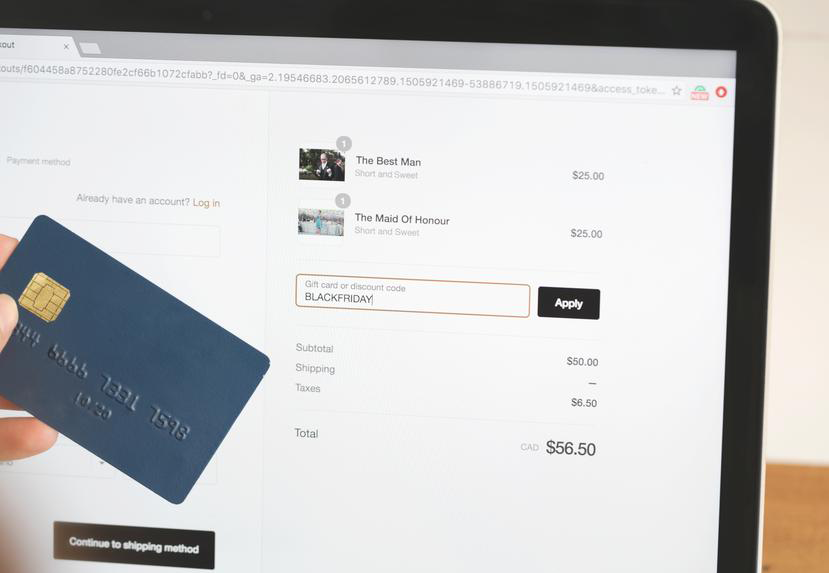
Think about what makes you want to return to your favorite stores, online or otherwise; it’s all in your previous experience of that store. No customer wants to feel like just another number to a retailer – the key is in nurturing the customer’s loyalty by giving them a shopping experience to remember, and this doesn’t have to stop at the completion of a transaction. Take the example of using an email to thank a first-time customer for shopping with you. Offering them a worthwhile discount code when they spend over a certain amount on their next purchase is a perfect way to entice them to shop again.
At its core, coupling customer segmentation with retention marketing gives you the power to curate marketing strategies personalized to each segment. Get started by testing the success of your current marketing with each of your segments. Do your ‘Best’ customers love emails with product recommendations based on what they’ve bought before? What about your ‘New’ customers? Maybe they just need a reminder to join your generous loyalty program that allows them to climb to higher-earning tiers and they’ll become a ‘Loyal’ customer in no time.
Let’s create an example: Jane is in your ‘Loyal’ customer segment. She shops reasonably often, although mostly in smaller amounts – a single item at a time (your best customers shop frequently and often buy three or more items at a time). To successfully have Jane move to your ‘Best’ customer segment, you would need her to spend more with each purchase. Giving her access to a tiered loyalty program that rewards her for these purchases could be the marketing strategy that changes her shopping patterns. She knows that if she spends $X on the next purchase, she’ll move tiers and gets access to doubled points per spend. Moving tiers and higher rewards could be the incentive Jane needs to make more frequent purchases with you.
As Jane begins to spend more with you, you evolve your marketing strategies and use these to nurture your customer relationships, this, in turn, makes Jane (and customers like her) feel more engaged with your brand and fosters loyalty. Jane is therefore increasingly more inclined to shop with your store and is now more likely to enter more reliable segments. If loyalty programs aren’t working for your customers, then maybe it’s time to trial deals on shipping or offering freebies with purchases that total over a certain amount.
Check out Our Bralette Club's loyalty program for an idea of how to master a generous loyalty program. The team at Our Bralette Club makes it easy for their customers to accumulate points and then once those customers reach 1000 points and then 1200 respectively, they reach different levels of the Peach Party VIP program. At level 2, customers start earning 3 points for every dollar they spend and at level 3, they earn 4 points for every dollar spend.
The Peach Party's detailed VIP program instantly gives OBC's customers more and more incentive to keep shopping at a store they already love enough to have earned points to reach another tier.
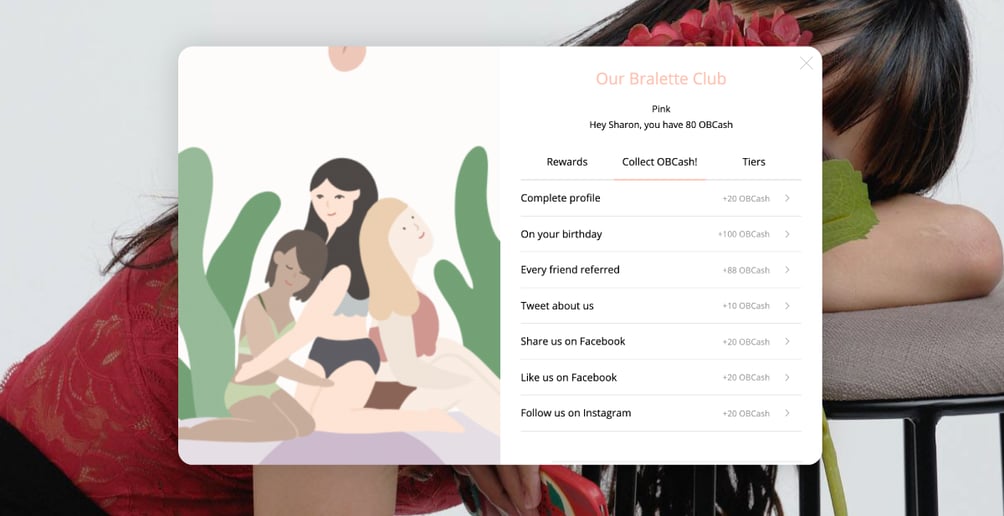
Global beauty brand and distributor, MECCA, are also well known for their loyalty program, ‘Beauty Loop’, featuring multiple tiers and yearly freebie rewards to customers within each tier – and those gifts keep getting better with each tier that their customers reach.
MECCA are also champions of freebies and offers, including entire racks of travel-sized cheaper, but beautifully presented products near their tills and offering free trial products when certain purchase requirements are met. If you don’t have a MECCA store near you, take a look through their products and marketing online to see how the pros are nailing it in both an eCommerce and POS setting.
Check out their loyalty program in the image below:
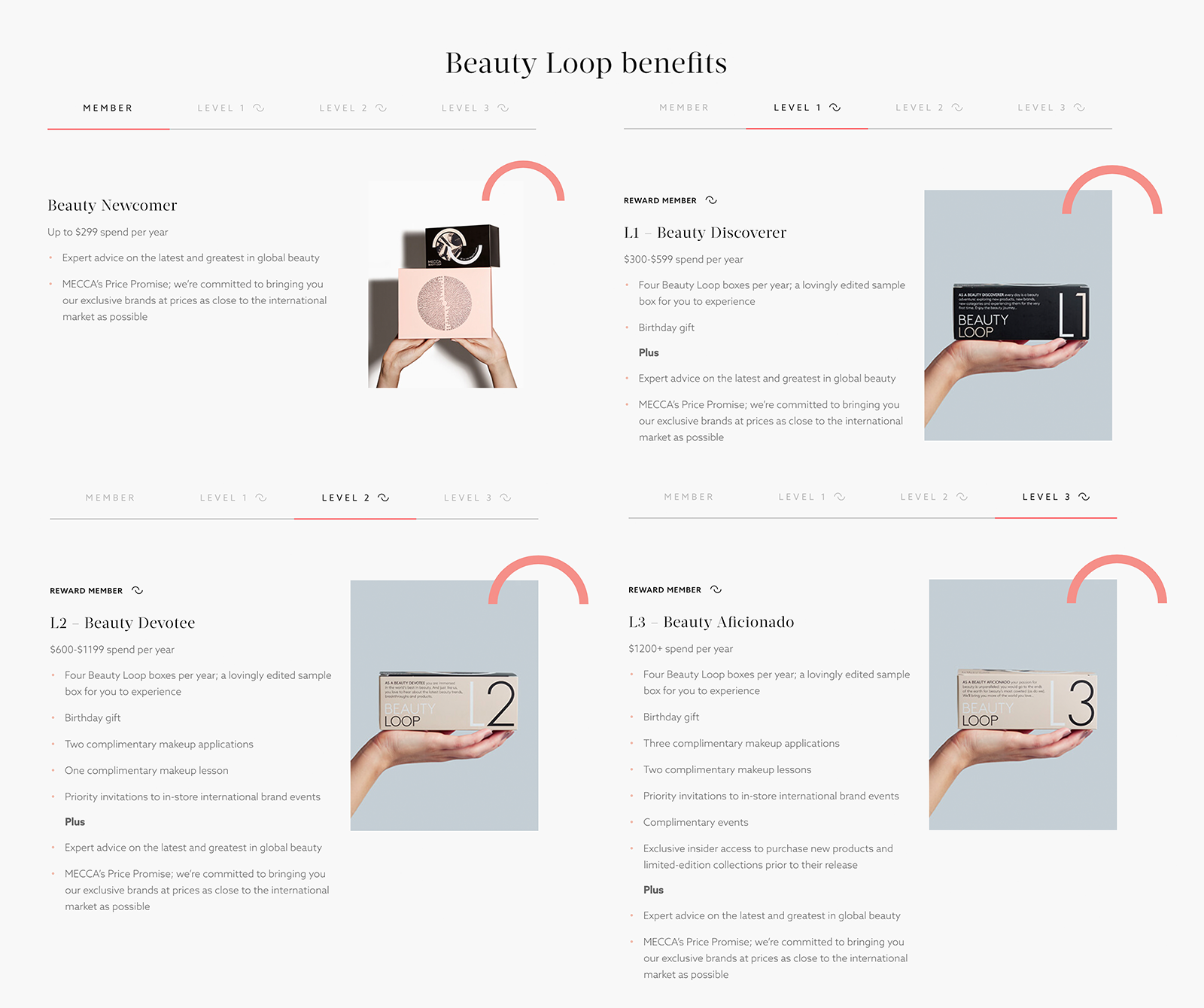
Another power of retention marketing is that you’re reaching out to customers who already know your business, your brand, and your products. This means that you’re able to rely on this knowledge to bring them back to your store with crowd favorites, unmissable deals, or loyalty program incentives. Remember, it’s all about helping your customers to feel supported, understood, and appreciated.
Retention marketing is huge and can require a bit of trial and error. To get you started on planning, check out this blog from BigCommerce on “How to Retain Customers and Spend Less”. Take note of the way they stress the importance of personalization, customer service, and, above all, valuable content. Shopify is also nailing product advice with this course on product photography. If you know that certain products are selling more than others and you think it could directly relate to the image or text in that product listing, perhaps it’s worth testing if replicating this with other products will help all of your products to sell equally as well.
As we’ve noted before, email marketing is the most effective form of marketing within retail – even if you’re store is solely brick-and-mortar with a loyalty program linked to your POS, you can effectively use email marketing with your customers. To put it into simple figures, the ROI of email is as high as 3,800% and email marketing is as high as 40x more effective than Facebook or Twitter when it comes to product marketing making conversions. By intelligently segmenting your customers base and understanding your customers by their shopping habits allows you to open up an enormous range of marketing potential. Providing content that is relevant to each customer segment automatically helps those customers to feel more appreciated, more engaged, and therefore more likely to complete a purchase.
With all the planning, trial, and error that comes with figuring out how to make your marketing work for you, it can all feel very intimidating. Apps like Marsello, with a built-in tiered loyalty program and automated email flows, are designed to make this process easier for you and can be a powerful addition to your toolkit. Remember though, when you’re adding to your marketing toolkit, this needs to be accounted for in your budgeting.
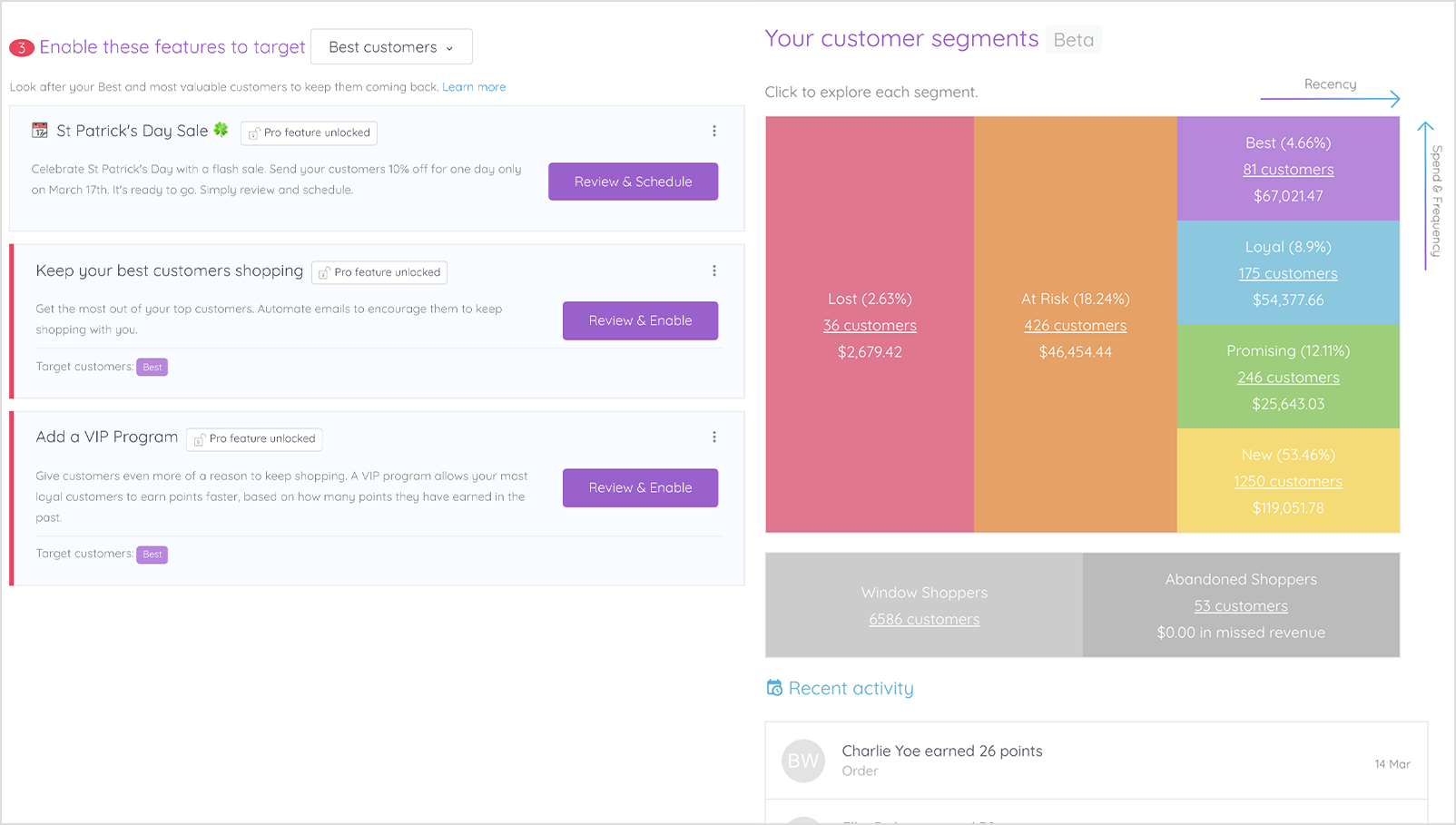
Final Words
The buzz around retention marketing is there for a reason, it works! And with customer segmentation at your fingertips with tools like Marsello, it’s so much easier to automate this process and understand your data. Remember though, it’s not as simple as setting up a loyalty program and hoping that will be enough, you need to cater to your customers and find out exactly what it is that works for each segment. Do your research too – it never hurts to check out what successful stores like yours are up to.
Stay tuned for blog three in this series in which we will go in-depth on acquisition marketing. We want you to get the most ROI from your marketing budget, and we want it to be simple for you to achieve this success. Let us know if there are any tricks that you love using in your retention marketing in the comments below, or better yet, head to our app listing and give us a review of what it is exactly that you love about Marsello.
Have you seen the rest of the Customer Segmentation Series?
Check out Part One and Three in the links below:



